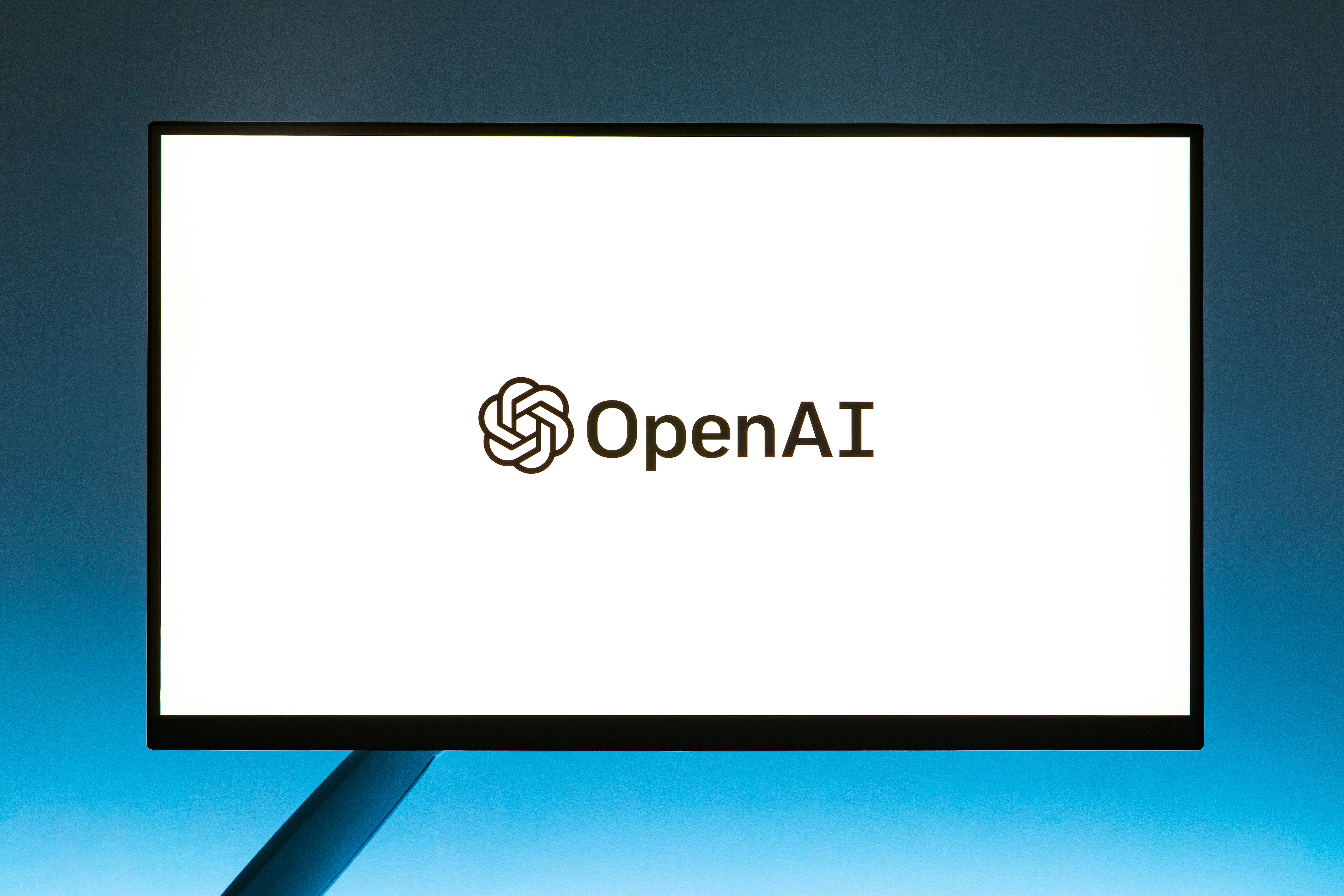Home » Blog » Artificial Intelligence
OpenAI’s $10B Power Move: How It Reshapes AI’s Future
OpenAI's $10 billion funding boost is set to accelerate AI development, reshape the competitive landscape, and spark a talent war. Explore the future of AI innovation.
Why Choose The Flock?

+13.000 top-tier remote devs

Payroll & Compliance

Backlog Management

In a bold move that has caught the attention of the entire tech world, OpenAI recently secured a staggering $10 billion in liquidity.
This huge financial boost comes from a $6.6 billion fundraising round, combined with a $4 billion line of credit from global banking giants like JPMorgan Chase, Citigroup, and Morgan Stanley. OpenAI, the powerhouse behind ChatGPT and a trailblazer in artificial intelligence, now has more resources than ever to accelerate its cutting-edge projects.
Why does this matter? In the hyper-competitive race for AI supremacy, access to resources is everything. With heavyweights like Microsoft and Nvidia in its corner, OpenAI is positioned to lead the pack in AI development.
But the implications of this financial windfall extend far beyond the company itself.
In this blog post, we’ll explore the five key ways this will shape the future of artificial intelligence and the tech world at large.
1. Accelerating AI Development: Racing Toward the Future
If there’s one thing that drives innovation in AI, it’s speed. The faster a company can develop and release new models, the quicker it can stay ahead of competitors. OpenAI’s newfound financial power allows it to do just that—accelerate research and development at an unprecedented pace.
With access to billions, OpenAI can pour resources into pushing the boundaries of AI technology. We can expect to see more frequent releases of advanced generative models, each more capable and sophisticated than the last.
This will include improvements not only in natural language processing but also in areas like AI reasoning, image generation, and even machine creativity.
What does this mean for the rest of the AI world? Competitors will have to adapt quickly or risk falling behind.
Companies like Google, Meta, and countless AI startups are all part of the race. But now, with OpenAI flush with cash, the speed of innovation is bound to pick up—and that’s great news for consumers who will have access to increasingly smarter tools at their fingertips.
2. Unlocking Unprecedented Computing Power
Behind every advanced AI model is a massive amount of computing power. In fact, one of the key barriers to innovation in AI is the sheer cost of training these models. It requires access to top-tier infrastructure, and this is where OpenAI’s partnership with Nvidia becomes critical.
Nvidia, known for its cutting-edge processors and GPUs, provides the horsepower behind the AI revolution.
With billions now at its disposal, OpenAI can significantly expand its computing infrastructure, leveraging Nvidia's top-tier technology to scale its operations. This will enable the company to train even larger and more complex AI models, unlocking new capabilities that were previously out of reach.
This could lead to breakthroughs in machine learning, natural language processing, and image recognition, revolutionizing industries from healthcare to finance.
Imagine AI systems that can analyze medical images faster than any radiologist or detect patterns in financial markets that no human could ever identify. With this kind of computational power, the possibilities are limitless, and OpenAI is well-positioned to push the envelope even further.
3. Redefining the Competitive Landscape in AI
The infusion of capital does more than just strengthen OpenAI’s position—it reshapes the entire competitive landscape of the AI industry. With this kind of financial backing, OpenAI now stands head-to-head with the biggest players in the tech world, including Alphabet’s DeepMind and Meta’s AI division.
For emerging startups, this presents both an opportunity and a challenge. On the one hand, OpenAI’s rapid expansion could inspire collaboration, mergers, or even acquisitions. Smaller companies with niche expertise may find themselves partnering with or being absorbed by larger organizations that are seeking to enhance their own AI capabilities.
On the other hand, it could also discourage new entrants who fear they won’t be able to compete against such well-funded giants.
The tech world is known for its fast-paced competition, and with OpenAI pulling ahead financially, we may see a flurry of activity as companies scramble to match its scale. Whether this leads to collaboration, consolidation, or competition, one thing is clear: OpenAI is rewriting the rules of the AI game, and everyone else will have to play catch-up.
4. Pushing for Regulatory Influence: A Battle for AI Governance
As OpenAI continues to dominate the AI space, another pressing issue looms on the horizon—regulation.
With governments around the world grappling with the ethical, security, and societal implications of AI, regulation is inevitable. However, with its newfound financial clout, OpenAI is in a powerful position to influence how these regulations are shaped.
The company, along with other major tech players, has already called for lawmakers to avoid heavy-handed regulation that could stifle innovation. OpenAI’s ability to lobby for policies that favor rapid AI development, while ensuring safety and ethical standards, will play a crucial role in how AI is governed in the future.
However, this raises a critical question: How do we balance innovation with accountability? The ethical implications of AI are vast, from concerns about job displacement to potential biases in algorithms.
With OpenAI leading the charge, regulators will need to strike a delicate balance between fostering technological growth and ensuring that AI development remains ethical, safe, and transparent.
5. The AI Talent War: A New Era for Hiring in Tech
In the world of AI, talent is just as important as technology. And with billions at its disposal, OpenAI is in a prime position to attract the best and brightest minds in the field. But this influx of capital will do more than just bolster OpenAI’s workforce—it could trigger a talent war across the tech industry.
As demand for AI researchers, engineers, and data scientists skyrockets, we’re likely to see fierce competition for top talent.
Salaries will rise, recruitment efforts will intensify, and companies will need to get creative in how they attract and retain skilled professionals.
The AI talent pool, already limited, will become even more competitive, driving innovation as companies push to develop the next big breakthrough in AI technology.
At the same time, this could lead to a global redistribution of talent.
Countries with strong AI education programs may become hubs for recruitment, while companies in regions with less access to AI expertise may struggle to keep up. OpenAI’s ability to attract top talent will undoubtedly give it an edge, but it will also push the entire tech industry to up its game when it comes to hiring and retaining skilled AI professionals.
What This Means for the Future of AI
OpenAI’s $10 billion financial milestone isn’t just a win for the company—it’s a game-changer for the entire AI industry. From accelerating AI development to unlocking unprecedented computing power, reshaping the competitive landscape, influencing regulations, and igniting a talent war, the implications are vast and far-reaching.
The next few years will be pivotal as OpenAI and its competitors race to develop the most advanced AI systems the world has ever seen. The possibilities are endless, but so are the challenges.
As consumers, investors, and tech enthusiasts, it’s crucial to stay informed about these developments and understand how they’ll shape the future of AI and the world as we know it. So, what’s next for AI? Only time will tell, but one thing is certain—OpenAI is leading the charge, and the future of artificial intelligence has never looked more exciting.
FAQ
Why is OpenAI's $10 billion financial boost significant for the AI industry?
OpenAI’s $10 billion in liquidity, from a combination of fundraising and credit lines, provides the company with the resources to accelerate AI development and maintain its leadership in the AI race.
This boost enables OpenAI to invest in advanced AI research, computing infrastructure, and talent acquisition, positioning it to compete with industry giants like Google and Meta.
How will this funding accelerate OpenAI's AI development?
With access to significant capital, OpenAI can fast-track research and development, leading to more frequent and advanced releases of generative AI models. This pace of innovation allows OpenAI to remain competitive while driving advancements in AI capabilities such as language processing, image generation, and machine learning.
What role does computing power play in AI development, and how does OpenAI benefit from this?
Computing power is critical for training large AI models, and it's one of the most expensive aspects of AI development. OpenAI’s partnership with Nvidia ensures it has access to top-tier processing capabilities, allowing it to train complex models faster and unlock new technological breakthroughs in industries such as healthcare and finance.
How does OpenAI's financial strength reshape the competitive landscape in AI?
OpenAI's financial backing places it in a leading position alongside major tech players, making it harder for smaller startups to compete. This may lead to more partnerships, mergers, or acquisitions in the AI space as companies seek to scale their capabilities to keep up with OpenAI’s rapid growth and innovation.
What is the impact of this funding on the AI talent market?
OpenAI's capital allows it to attract top AI talent, intensifying competition for skilled professionals. This could lead to a global talent war, with rising salaries and increased recruitment efforts across the tech industry.
OpenAI’s ability to draw the best talent will fuel further innovation, but it may also challenge other companies to match its competitive hiring practices.
Why Choose The Flock?

+13.000 top-tier remote devs

Payroll & Compliance

Backlog Management